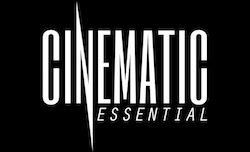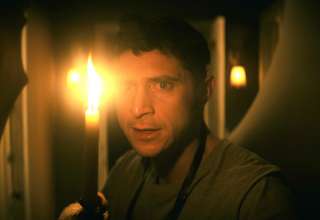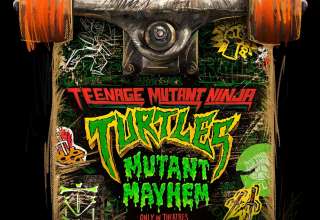Steve Jobs invokes both positive and negative reactions whenever his name comes up. For many of his fans, the support is due to his many game changing creations at Apple. His detractors however mainly judge him as a person since most of them actually knew him and spent time. In Danny Boyle’s film predicated on his life, we’re offered a glimpse into both of those sides.
Starring Michael Fassbender as the man himself, Steve Jobs sets out to paint a portrait of a man who could be seen as both inspiring and hard to get along with. By using what were only snapshots of his laugh, director Danny Boyle and writer Aaron Sorkin hope to illustrate who Jobs actually was, how he operated and what it was that he went through in terms of crucial points in life were concerned.
The film is set in the years of 1984, ’88 and ’98, Steve Jobs uses three of the biggest launches of the innovator’s life as a way to tell his entire story. Most of us would assume that there wouldn’t be much mayhem during all three launches, so the fact that so many dramatic things happened at these times seems to be unrealistic. This could be viewed as a negative for anyone looking for a straight up biography, but doing it this way makes for a better film.
The reason Steve Jobs is a better film due to this structure is because it compacts all of the emotion that the expected set up would have while removing every single one of the more uneventful scenes that usually come along with the conventional storytelling method. By taking this approach and timing the use of flashback scenes perfectly, the film feels faster than it actually is and remains consistently engaging throughout. With that being the case, there’s almost no down time and very little chance or reason to look away.
Throughout the entire film, the personality of Jobs is being put on display in order to give viewers a glimpse of who he was and how he approached life when it came to dealing with those who took up space in his life. In essence, these are the driving factors of the film. We get to hear about his ideas to an extent, but we’re here to see and hear about who he was a man. That’s what Steve Jobs gives us
Making Steve Jobs in this fashion also puts a great deal of responsibility on the actors. This picture shows why it’s important to include actors who are fantastic at what they do. They’re able to keep up with the pacing that’s set right from the very beginning. If this isn’t handled properly, the film simply doesn’t work that well. There’s nothing else to distract us from their potential failures, so much of it is squarely placed on their shoulders.
You’ll also find that the teamwork between Aaron Sorkin and Danny Boyle is wonderful here as well. I don’t know how this came together for them, but they certainly make it work. It’s clear they developed a gameplan that got the best parts of the material they were asked to work with.
I came into this picture wondering how they would make this work. Telling a story about people wanting to make computers isn’t exactly inspiring. However, doing it the way it’s done makes it more interesting than it would be under any other circumstance. If it were possible to do in writing, I’d seriously consider giving Danny Boyle and Aaron Sorkin a standing ovation right now for their work on Steve Jobs. Not because it’s a great film, but because they are able to turn a story that could have easily failed into something worth watching.
Rating: R
Director: Danny Boyle
Cast:
Michael Fassbender
Kate Winslet
Seth Rogan
Jeff Daniels
Katherine Waterson
Michael Stuhlbarg
Film Length: 122 minutes
Release Dates:
October 9, 2015 (Limited)
October 23, 2015 (Wide)
Distributor: Universal Pictures





















